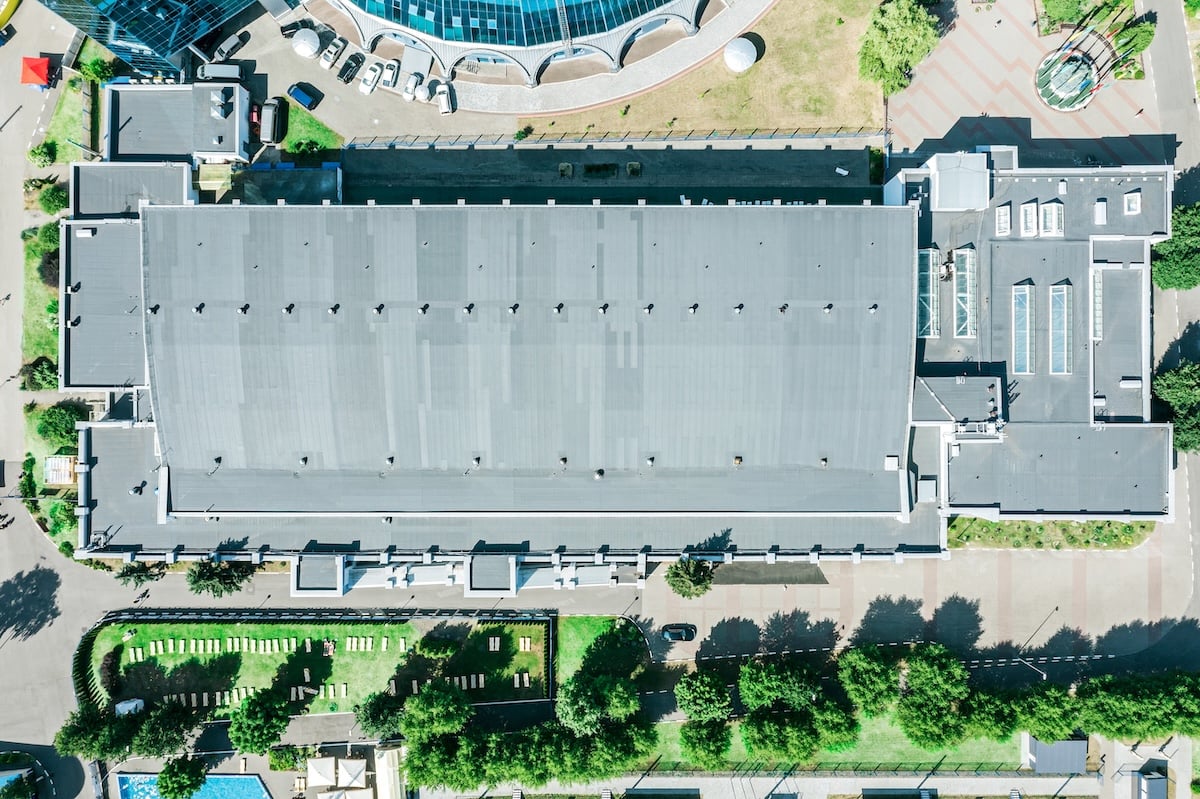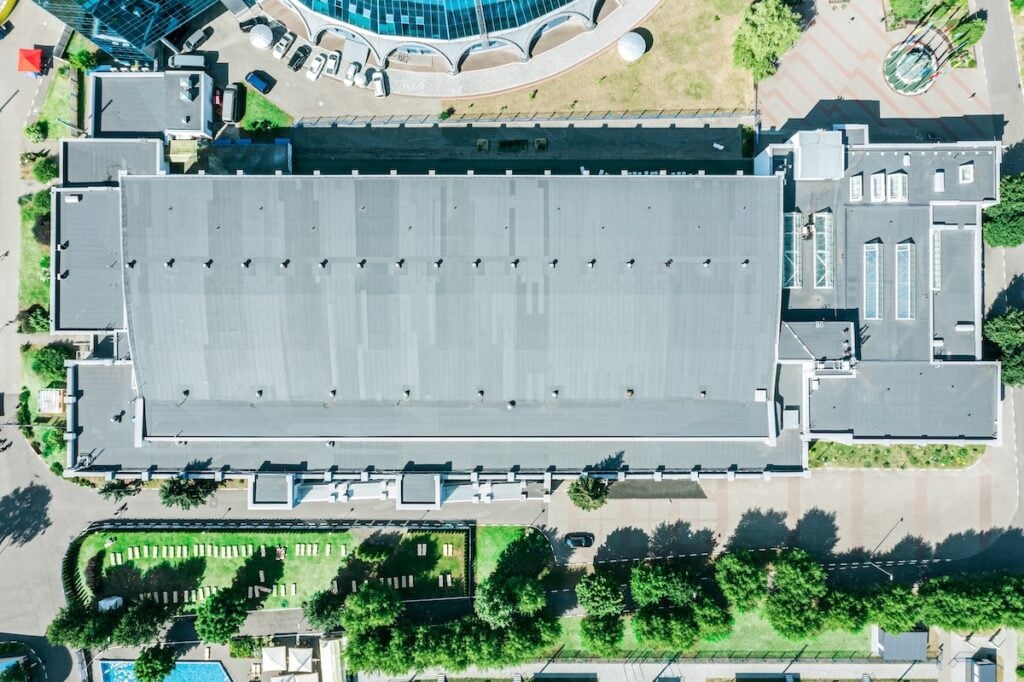Scheduling a commercial roof inspection is one of the smartest steps you can take to protect your building, budget, and long-term operations. Whether it’s part of routine maintenance or prompted by a storm or visible damage, a professional inspection gives you a clear view of your roof’s condition and what to do next.
Roof issues on commercial buildings can escalate quickly. Small leaks, compromised membranes, or clogged drainage systems can lead to expensive structural damage or interior loss. Regular inspections help identify problems early, extend your roof’s lifespan, and support warranty compliance.
In this blog, you’ll learn:
- What happens during a commercial roof inspection
- Why inspections are necessary for flat or low-slope systems
- How to prepare and what you’ll get in return
Whether you own a warehouse, retail center, office space, or multifamily building, understanding the process can help you stay proactive.
❗️ Why Commercial Roof Inspections Matter
Unlike residential roofs, commercial roofing systems are often flat or low-slope, which makes them more prone to ponding water, membrane punctures, and drainage issues. These problems can be hard to spot from ground level.
Regular inspections offer benefits like:
- Early detection: Catch issues before they lead to costly repairs or full replacement.
- Warranty support: Many commercial roof warranties require documented inspections.
- Insurance claims: Inspection reports serve as helpful documentation if storm damage occurs.
- Asset protection: Keeps your building safe, energy-efficient, and code-compliant.
Inspections should be scheduled at least once a year, and after any major weather event.
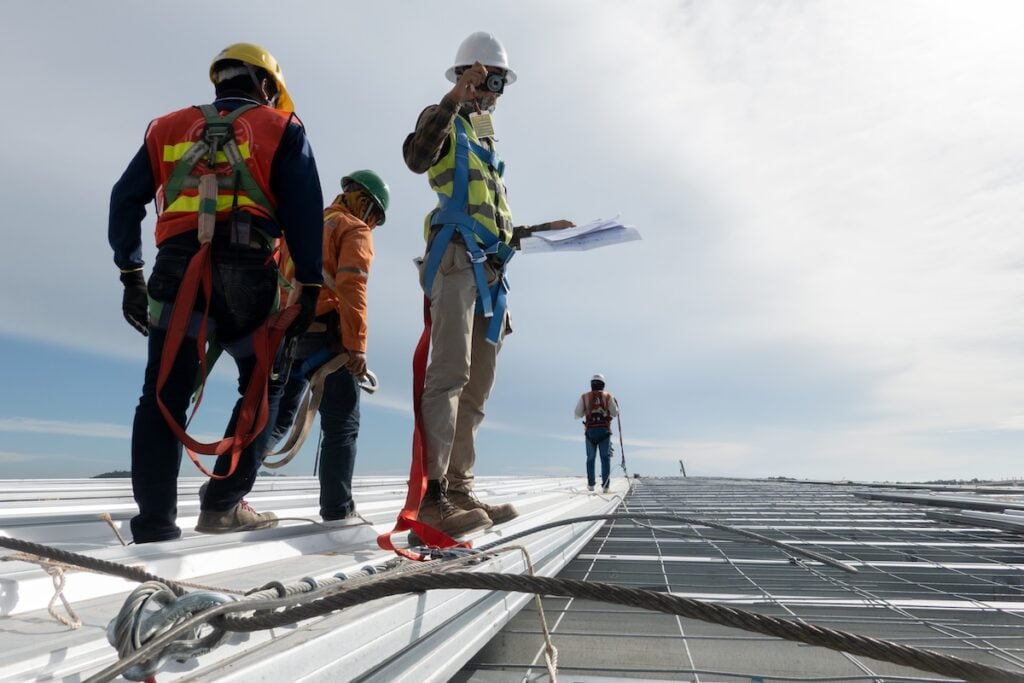
🔍 What’s Included in a Commercial Roof Inspection?
Professional inspections follow a structured process to evaluate all key components of the roofing system. Here’s what you can expect during the visit:
1. Exterior Evaluation
The inspection starts with a walkaround of the building to identify any visible signs of damage or deterioration on the roof perimeter, walls, and flashing.
- Signs of damage: Cracks, missing sealant, rust, and worn edges.
- Building movement: Shifts or settling that might affect roof performance.
- Roof access: Checking ladders, safety rails, and hatches.
This first step sets the stage for a closer look at the roof surface itself.
2. Surface and Membrane Inspection
Next, the inspector will assess the surface of your flat or low-slope roof, checking for wear, damage, and trouble spots.
- Membrane condition: Cracks, blisters, punctures, or seams pulling apart.
- Pooling water: Evidence of improper drainage or sagging sections.
- Debris buildup: Leaves, trash, or loose materials that block water flow.
- Foot traffic damage: Signs of wear near walkways or service equipment.
The surface inspection is one of the most important steps, especially on TPO, EPDM, or built-up roofing systems.
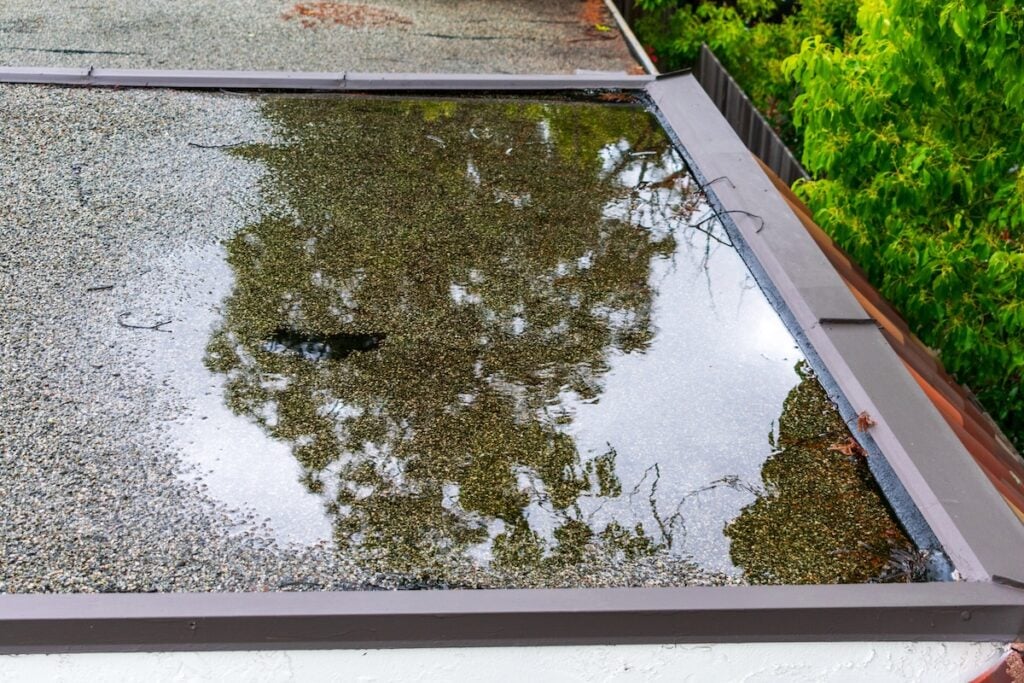
3. Drainage Systems Check
Commercial roofs must channel water away quickly to avoid leaks and deterioration. The inspector will check:
- Scuppers and gutters: Free of debris and working properly.
- Drains and downspouts: Clear, secure, and functional.
- Slope and pitch: Confirming the roof is shedding water as intended.
Blocked or undersized drainage systems are a common cause of roof failure.
4. Interior Inspection (If Needed)
In some cases, the inspector may check inside the building to look for signs of water intrusion.
- Ceiling stains or sagging: Evidence of hidden leaks.
- Insulation issues: Wet or compacted insulation near leak points.
- HVAC and ductwork: Any signs of condensation or roof penetration issues.
Interior evaluation is especially important when a leak has already been reported.
5. Roof Penetrations and Equipment
Commercial roofs often house HVAC units, vents, pipes, and skylights. These areas are common sources of leaks if not properly sealed.
- Flashing and sealants: Checked for cracks or deterioration.
- Mechanical curbs: Assessed for rust, gaps, or movement.
- Penetration count and condition: Documented for future reference.
Inspecting these areas helps prevent water intrusion around rooftop equipment.
6. Report and Recommendations
Once the inspection is complete, you’ll receive a detailed report that outlines the current condition of the roof, any issues found, and recommended next steps.
- Photo documentation: Helps you see exactly where problems exist.
- Maintenance recommendations: Routine fixes to extend roof life.
- Repair or replacement plan: If significant issues are found.
This report serves as a roadmap for future decisions and is a valuable tool for budgeting and planning.
✅ How To Prepare for a Commercial Roof Inspection
To get the most out of your inspection, a few simple preparations can help:
- Clear roof access: Ensure ladders, hatches, or stairways are safe and unlocked.
- Remove unnecessary rooftop items: Old pallets, unused equipment, or debris.
- Notify tenants or staff: Let people know when the inspection will take place, especially if interior access is required.
- Have your maintenance log available: Past repairs, leaks, or warranty documents help the inspector provide a more thorough assessment.
Being prepared helps your inspection go faster and ensures accurate results.
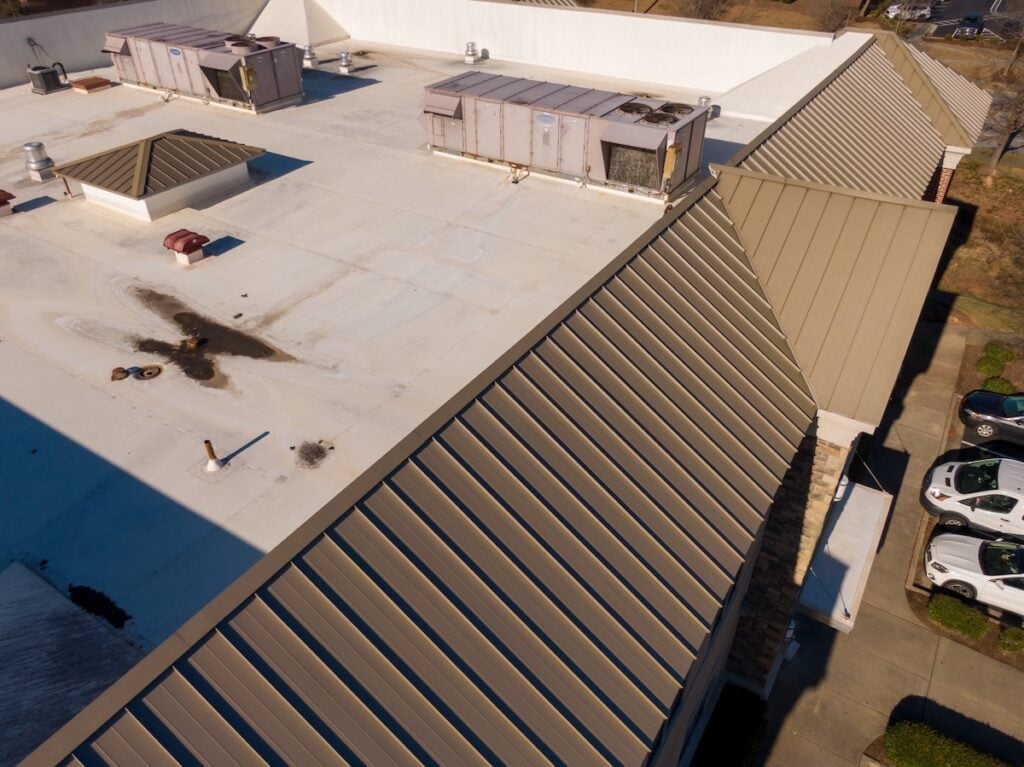
🗓️ How Often Should You Schedule a Commercial Roof Inspection?
Industry best practices recommend:
- Twice yearly inspections: Once in the spring and once in the fall.
- After major weather events: Especially hailstorms, heavy winds, or blizzards.
- Before warranty expiration: To identify potential claims or necessary repairs.
Regular inspections reduce the risk of costly surprises and allow for smarter budgeting.
🤝 Protect Your Property With Professional Insight
A commercial roof inspection gives you the clarity you need to protect your building, your investment, and your peace of mind. Whether it’s part of a routine maintenance plan or in response to damage, having your roof professionally evaluated is a smart, proactive step.
At J-Tech Construction & Solar, we offer expert commercial roof inspections tailored to your specific roof type, age, and business needs. From detailed reports to honest recommendations, we help you plan with confidence.
Contact J-Tech today to schedule your free estimate and make sure your commercial roof is ready for whatever comes next.

